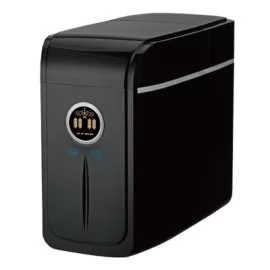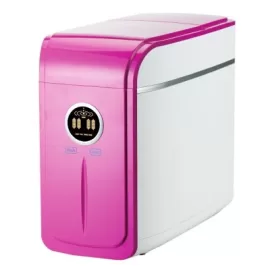Tank vs Tankless Reverse Osmosis Filters: What Is the Difference?
Imagine that you visit the Doctor tomorrow for a routine medical check up and while you are at it, you see a slight frown form on your healthcare provider’s forehead, unlike every other time. He keeps you for longer today to run some more tests as regards something he is concerned about. In the end you discover that you have an infection that your Doctor suspects is closely linked to prolonged consumption of badly treated water. What would you do?
The good news is that you don’t have to wait till your health deteriorates before you do something to improve the water that you drink. The simple implementation and application of a good water filter system can eliminate harmful contaminants from your water.
The Role and Key Features of Good Water Filters: Water Tank Filter Use and Characteristics
How Do Tank Water Filters Work?
This type of water filter system comes fitted with a water tank for storing filtered water. The main characteristic of this system is that it treats water at the point of entry into the building. In reverse Osmosis Tank Water filters, water is passed through a semipermeable membrane to remove contaminants from water.
- Initial filtration: this is the first step the water undergoes when it enters the tank. Larger contaminants like rust, sediments, dust, are eliminated from the water by the pre-filter.
- Activated Charcoal filtration: activation charcoal serves to trap and separate organic compounds and chemicals. It also effectively removes chlorine from the water because of its large surface area which gives it high adsorption ability.
- Reverse Osmosis: water is pressure passed through a semi-permeable membrane, like cellulose acetate. The membrane allows tiny molecules like water to pass through, leaving behind larger molecules of impurities.
- Additional filtration: depending on what the purpose of the water is, although optional, water can be further subjected to one more filtration process to remove contaminants like microbial contaminants.
- Contaminant removal: the rejected particles are expelled from the tank system as waste.
- Tank Storage: the Permeate is then sent to another dedicated tank for storage if necessary (If you need more water stored up)
- Distribution: If unnecessary, the water is supplied directly into the building for use.
Advantages of Tank Water Filters
Water Capacity: Typically the tanks that come fitted with this system have a storage capacity anywhere between 2 to 10 gallons, ensuring that there is always access to clean and safe water.
Water Pressure: This can be a problem with the tankless variant especially if one has a large building. The water pressure may not be enough to supply some parts of the building. However, with tank water filters, users can setup their tank to achieve the maximum water pressure possible.
More Filter Options: the reservoir nature of the tank means that more filtering options can be added, like a remineralization filter.
Common Reasons to Buy a Tank Water Filter
- Large residential Facilities: Tank Water Filters are the way to go to avoid water pressure issues if you have a sizable building. Once your storage is elevated high off the ground enough, you will be able to build enough water pressure to serve more locations within the building.
- Geography: If you reside in the suburbs where you have enough space and can easily get a permit to keep a tank, then this water treatment system may be better suited for you, especially if the cost of tank maintenance is affordable within that region.
- Mobile homes: alternatively, if you live in any variant of the mobile homes available on the market now and saving all the space you can is a priority to you, you can simply opt for this water filer system and have it attached to back of your mobile home.
Tankless RO System Features
How Tankless Water Filters Function?
Also known as point of use reverse osmosis water filter system, the function like their counterpart water system and have the same components, only without a tank.
What are Tankless RO Water Filters Good at?
They provide on demand filtered water and do not have the disadvantages of pre-storage in a tank. For the most part, tanks have to be positioned outside in a place spacious enough. Also tanks with prolonged use can become dirty and harbor harmful microorganisms. Tankless reverse osmosis water filters bypass the downsides as the system can be installed within the building right next to the water outlet, for instance, just beneath your kitchen sink.
Key Factors to Consider When Selecting a Tankless Filter
- Geography: this water treatment system is best suited to those who live in urban, high-end, busy areas, like the New York boroughs. Apartments and housing in such areas do not provide space enough to keep a tank and an on-demand supply of safe water is the best way to go if water safety means anything to you.
- Maintenance costs: owning a tank means you may have to spend some money cleaning it out every few months if you do not have the time to do it yourself. That’s not bad in itself if maintenance costs where you reside are affordable, but in a high-end metropolis, you may want to save every penny you can and embrace a tankless water treatment system.
Tank vs Tankless Reverse Osmosis
| Tank Reverse Osmosis | Tankless Reverse Osmosis |
|---|---|
| Can supply large residences without water pressure issues | Water pressure may be a headache for large residences |
| Better suited to suburban communities | Better suited to housing and residences in metropolitan areas |
| Requires regular tank maintenance | Requires no tank maintenance |
| Requires significant space and probably a permit for tank storage | Minimum space required |
| Installation may cost more | Installation cost is decent |
| Prone to water wastage | More water efficient |
| Filter change is more time and labor-demanding | Filter change is easier |


